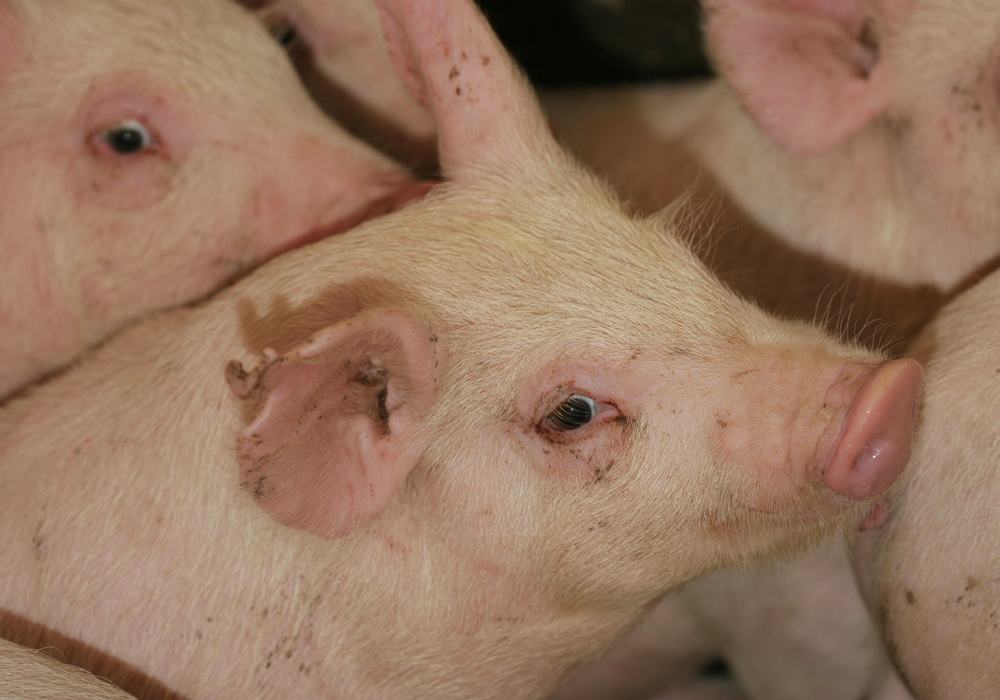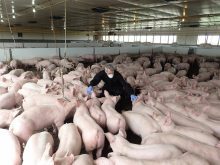The Vaccine and Infectious Disease Organization-International Vaccine Centre is now able to test the vaccines it develops
BANFF, Alta. — The vaccine centre based in Saskatoon is now able to test potential vaccines to combat African swine fever.
The Canadian Food Inspection Agency announced Jan. 8 that the Vaccine and Infectious Disease Organization-International Vaccine Centre, based at the University of Saskatchewan, can now more fully participate in the search for a response to the deadly pig disease that has decimated pig herds in China and parts of Europe and Asia.
Volker Gerdts, director of VIDO-Intervac, said the facility has already been working on vaccines, in concert with colleagues in South Africa, but any testing of those vaccines has had to be done at the federal government’s National Centre for Foreign Animal Disease in Winnipeg.
“Now, with us being permitted to work with the virus at VIDO, we hope that in the future we can then test these vaccines at VIDO. The big advantage for the country is that we just added more capacity to the testing,” said Gerdts.
VIDO has Level 3 containment facilities, which means it can safely contain serious and potentially lethal diseases during testing. It will be the first non-government facility in Canada to work with the ASF virus.

With CFIA permission to test, more funding is also available to continue the research, Gerdts added.
ASF has never been found in Canada and there are national efforts underway to keep it from entering the country and to deal with it should it arrive. An outbreak of the disease would close borders and cause havoc in the pork industry.
In a news release announcing VIDO’s involvement, federal Agriculture Minister Marie-Claude Bibeau emphasized the threat.
“With the spread of ASF in other parts of the world, the government of Canada is taking a leadership role to protect our pork industry, economy and Canadians’ jobs,” she said. “Supporting research towards an ASF vaccine is one of many ways that we are working to mitigate the global impact of ASF.”
Read Also

Beef check-off collection system aligns across the country
A single and aligned check-off collection system based on where producers live makes the system equal said Chad Ross, Saskatchewan Cattle Association chair.
Gerdts gave a presentation during the recent Banff Pork Seminar about the disease and the ways vaccines, once developed, could combat it. However, ASF is a worthy adversary.
“It’s a virus we don’t know much about. It’s a very large virus. It has a lot of genes. It’s one of the largest viruses. Just for comparison, ebola virus, which is a deadly virus and also a haemorrhagic virus, has seven proteins. This one has 170.”
In addition, the ASF virus has different hosts with different life cycles, can survive in extreme pH and temperature conditions and is difficult to grow in culture.
ASF is thousands of years old, said Klaus Depner, who heads the German National Reference Laboratory at the Friedrich-Loeffler Institute in Reims.
As its name implies, it originated in Africa and was contained between vector ticks that spread the virus through saliva and wild hogs that were bitten by the ticks. That balance was altered when European colonists introduced domestic pigs to Africa.
Even so, ASF did not raise much alarm until 2014, when it was found in Europe and initially thought to be self-limiting, said Depner.
When it began killing and then devastating pig populations in China last year and continued to spread in Asia, the world took notice and efforts to develop a vaccine went into high gear.
“The truth is, we haven’t had enough labs to really work with it,” said Gerdts, in part because few labs have the containment necessary to safely study it and test potential solutions.
“You only have a handful of labs that are allowed to work with it, so literally you have 20 people that over the last few decades have worked on this disease. So largely it has been neglected by the world and now that we have it in China … everybody in China is doing shift work there. They’re working 24-7 to come up with a vaccine. Now that there’s more work going in, more knowledge created … we can hopefully also make more effective vaccines.”


















